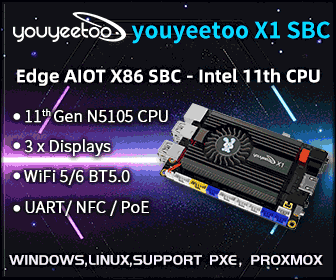Tronsmart Draco H3 TV Stick Firmware and SDK Released
Tronsmart Draco H3 is a low cost HDMI TV stick powered by Allwinner H3 quad core processor. At $35, the device costs about $5 more than Amlogic S805 based sticks like MK808B Plus with about the same specs (quad core Cortex A7/A5, 1GB RAM, 8GB flash, HDMI out..), but with the added benefit of 4K @ 30Hz support. Tronsmart has now released some firmware files as well as Linux kernel and an Android SDK. Two firmware files have been released: Tronsmart_Draco_H3_720p_Kernel_20150526.zip – Firmware with 1280×720 framebuffer for better performance Tronsmart_Draco_H3_1080p_Kernel_20150526.zip – Firmware with 1920×1080 framebuffer for higher resolution Please note that the resolution will only affect the user interface, and when you play videos you should get the resolution selected in Android settings. So if you play a 4K videos it will truly show as a 4K video on your TV, even though the user interface is only 720p, at […]





